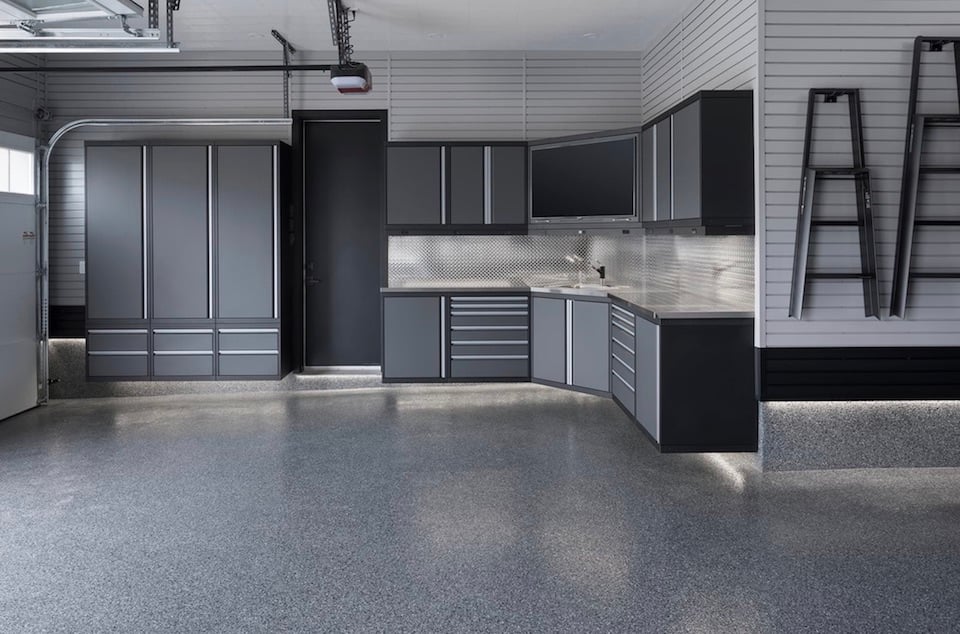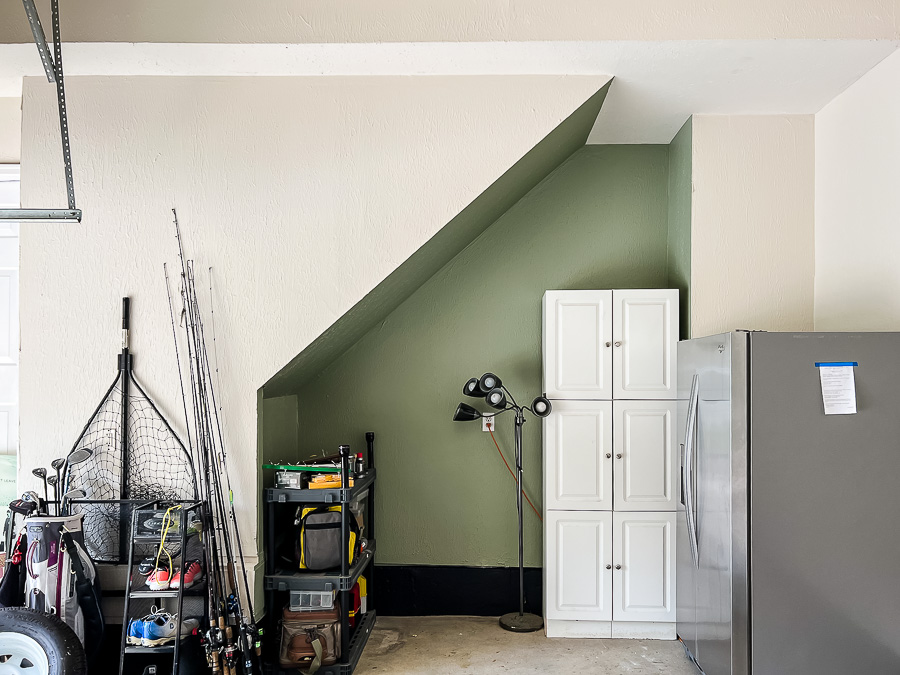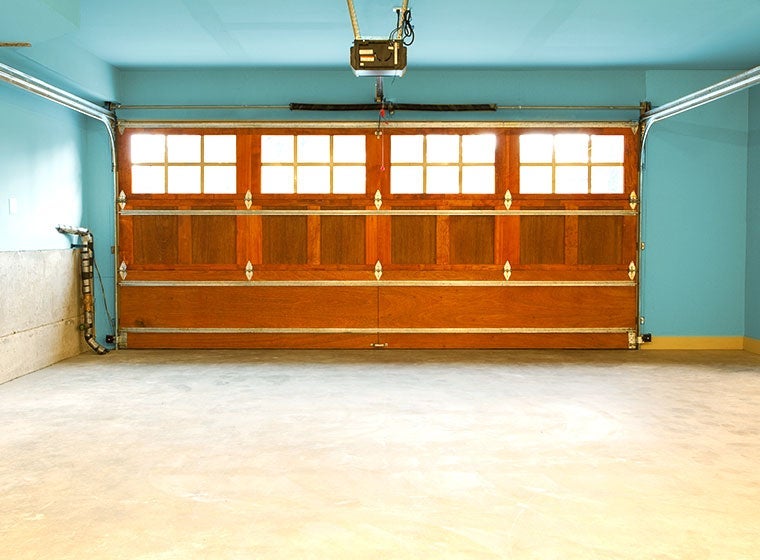When it comes to paint for garage walls, it’s essential to choose the right paint that can withstand the unique environment and demands of the space. Garage walls are exposed to a variety of conditions such as temperature fluctuations, moisture, grease, and potential impact damage. Selecting the appropriate paint can enhance the overall appearance of the garage while providing protection and durability. In this comprehensive guide, we will explore key considerations when choosing the perfect paint for garage walls, including durability, resistance to moisture and stains, application techniques, and maintenance. By following these tips, you can confidently select a paint that will withstand the demands of your garage and provide a long-lasting and visually appealing finish.

Durability and Resistance:
Scrubability: Garage walls may endure heavy use and require cleaning to remove dirt, grease, or other stains. Choose a paint with good scrubability to ensure ease of cleaning without damaging the paint’s finish.
Stain Resistance: Garage walls are prone to various stains, including oil, grease, and dirt. Look for paints specifically formulated with stain-resistant properties to minimize absorption and facilitate easier stain removal.
Impact Resistance: Garages often encounter accidental impacts from tools or equipment. Opt for a paint that offers impact resistance to reduce the likelihood of scratches, dents, and other surface damage.
Moisture Resistance: Garages can be subject to moisture, especially in humid environments or if there are water leaks. Select a chipped paint with moisture-resistant properties to prevent water damage, mold growth, and peeling over time.
Application Techniques:
Roller Selection: Use a high-quality roller with a longer nap to ensure optimal coverage and to reach into textured surfaces or uneven areas on the walls. A longer nap will help the paint adhere better and provide a more even and consistent finish.
Priming: Consider applying a primer before painting to improve adhesion and create a smoother surface. Primer also helps to seal the wall and prevent potential bleed-through of stains, ensuring a more uniform paint finish.
Number of Coats: Garage walls may require multiple coats, depending on the condition of the surface and the desired color. Ensure that you have enough paint to cover the walls adequately and allow sufficient drying time between coats.

Paint Type and Formulas:
Latex or Water-Based Paint: Latex-based paints are a popular choice for garage walls due to their durability, easy application, and low odor. They dry quickly and offer good resistance to moisture and stains. Look for latex paints formulated specifically for garage or high-traffic areas.
Epoxy Paint: Epoxy paints are known for their exceptional durability, chemical resistance, and high-gloss finish. They provide excellent protection against moisture, stains, chemicals, and abrasions. However, epoxy paints require careful preparation and application, including etching the walls and applying multiple layers.
Maintenance and Longevity:
Cleaning and Maintenance: Consider the level of maintenance required for the paint. Look for paints that are easy to clean, such as those that can withstand regular washing with mild detergents or automotive cleaning products.
Longevity: Select a paint with excellent longevity to minimize the need for frequent repainting. Look for paints with good color retention and resistance to fading, especially if the garage receives direct sunlight.
UV Resistance: If your garage has windows or receives direct sunlight, choose a half wall paint with UV resistance to minimize color fading and maintain the overall appearance of the walls over time.

Precautions when using paint for garage walls
Using the appropriate paint on garage walls is crucial to ensure longevity, protection, and an aesthetically pleasing finish. Garages often present unique challenges such as temperature fluctuations, exposure to moisture and chemicals, and impact damage. To achieve the best results, it is important to consider several key factors before and during the painting process.
Surface Preparation:
Clean the Surface: Thoroughly clean the garage walls to remove dust, dirt, grease, and other contaminants. Use a mild detergent or a degreaser, scrubbing with a stiff-bristle brush and rinsing with clean water. Allow the walls to dry completely before applying paint.
Repair Imperfections: Inspect the walls for any cracks, holes, or damaged areas. Repair them using an appropriate filler or patching compound. Sand the repaired areas to create a smooth surface for painting.
Remove Existing Loose Paint: If there are areas with loose or peeling paint, strip or scrape them off before applying a new coat. Use a paint scraper or a wire brush to remove the loose paint, ensuring a clean and solid substrate for the new paint.
Safety Precautions:
Ventilation: Ensure proper ventilation in the garage during the painting process. Open windows or doors and use fans to promote air circulation. This helps minimize exposure to paint fumes and allows paint to dry effectively.
Protective Gear: Wear appropriate personal protective equipment (PPE) such as gloves, safety goggles, and a respirator mask when handling paint, especially if using oil-based or epoxy paints. Read the manufacturer’s instructions and recommendations for specific product handling.
Fire Safety: Take necessary precautions to prevent fires, especially when using flammable paints or solvents. Keep the work area well-ventilated and away from open flames or ignition sources.

Application Techniques:
Proper Mixing: Before applying paint, thoroughly mix it according to the manufacturer’s instructions. This ensures even distribution of pigments and additives throughout the ombre wall, providing consistent color and performance.
Cutting-In: Start by cutting-in the edges and corners of the walls with a brush. This technique involves painting a strip along the edges to ensure a neat and precise finish before using a roller. Maintain a wet edge while painting to facilitate seamless blending of paint.
Roller Application: Use a high-quality roller with a long nap for better coverage in textured or rough surfaces. Apply the paint evenly in vertical or horizontal strokes, slightly overlapping each roll to avoid visible seams. Maintain a consistent pressure to avoid lap marks or uneven application.
Conclusion:
Choosing the perfect paint for garage walls requires careful consideration of durability, resistance to moisture and stains, application techniques, and long-term maintenance. By selecting a paint that offers excellent durability, impact resistance, and moisture protection, you can protect your garage walls while providing a visually appealing finish. Consider using a high-quality roller, applying a primer, and allowing sufficient drying time between coats for optimal results. Whether you opt for latex-based paints or epoxy formulas, ensure that the paint is easy to clean, offers good longevity, and provides resistance to UV rays.

